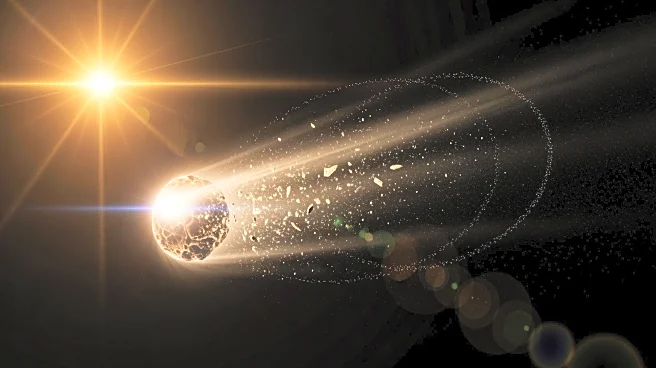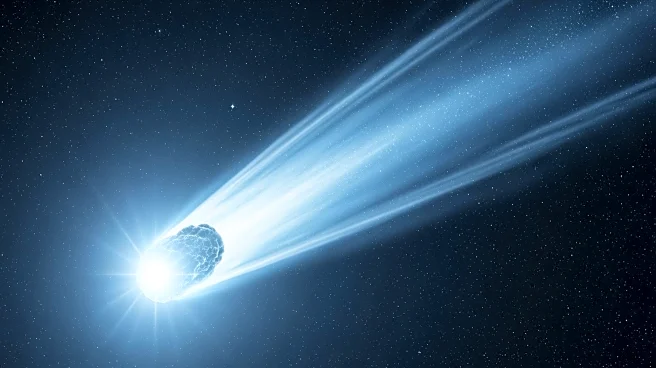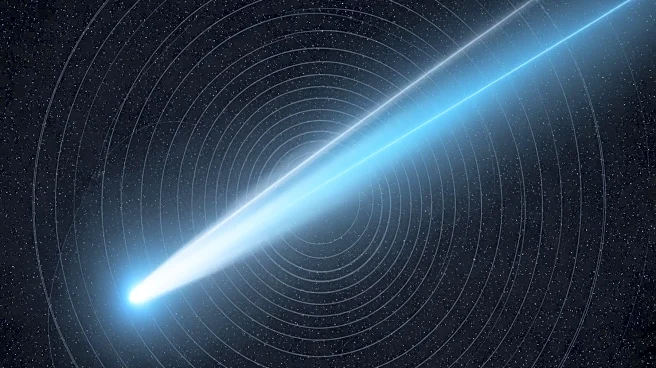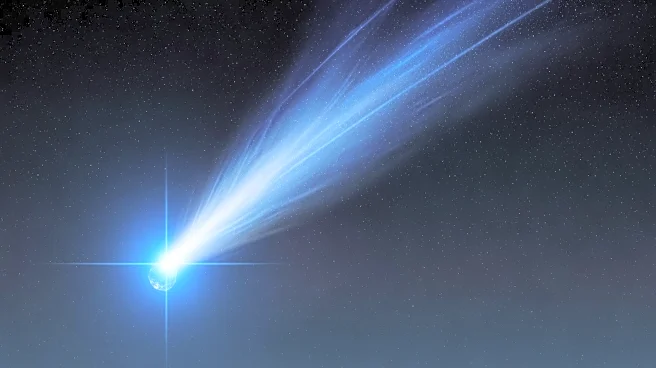What's Happening?
Interstellar comet 3I/ATLAS, discovered in July 2025, is currently visible in the sky, though it remains too faint for the naked eye. The comet, originating from outside our Solar System, is on a hyperbolic
trajectory and will not return once it leaves. It is currently a predawn object in the constellation Virgo, visible through telescopes and advanced imaging setups. The comet's closest approach to Earth will be on December 19, 2025, at a distance of about 1.8 AU, posing no threat.
Why It's Important?
The visibility of 3I/ATLAS offers a rare opportunity for astronomers and enthusiasts to observe an interstellar object. Its study provides insights into the composition and behavior of comets from other star systems, contributing to our understanding of cosmic phenomena. The comet's detection in radio waves confirms strong water outgassing, typical of cometary behavior, enhancing our knowledge of interstellar objects.
What's Next?
As 3I/ATLAS continues its journey, astronomers will monitor its trajectory and behavior, using data from various observatories and spacecraft. The comet's passage offers a chance to refine techniques for observing and analyzing interstellar objects, potentially aiding future missions aimed at studying such phenomena.
Beyond the Headlines
The comet's study challenges the notion that the Universe outside the Solar System has little impact on Earth. It underscores the importance of interstellar objects in understanding cosmic interactions and their potential influence on terrestrial life.











